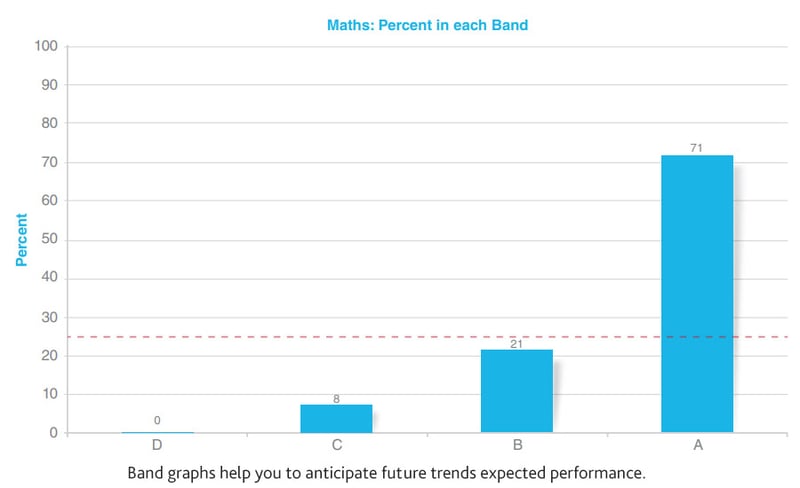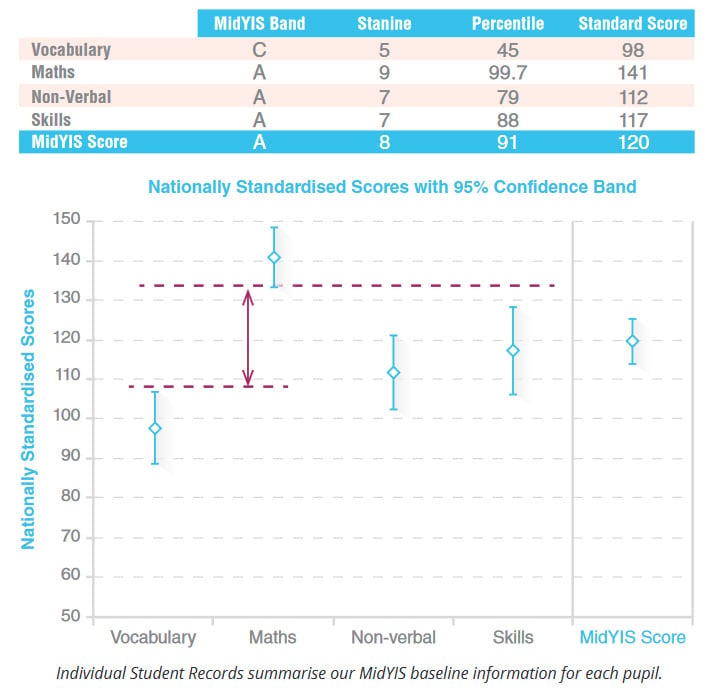Case Studies and testimonials / Hymers College
Hymers College
Using MidYIS to support transition across key stages
Hymers College is a selective independent Senior school in Hull with its own Junior School on site for Years 4-6. The school has used CEM assessments since the mid-1990s; MidYIS in Year 7 and Alis in Year 12.
Ian Sanderson, Director of Learning and Teaching at Hymers College for the last 8 years, explains here how MidYIS is used at Hymers to understand pupil needs and ease the transition between Year 6 and Year 7.
What are the key challenges for you with the transition between Year 6 and Year 7?
A large proportion of our Year 7 pupils join us from our Junior School, so we hold transition meetings where relevant information is passed on to their new form teachers.
However, there are a number of pupils who join us from other feeder schools. To our Senior School teachers they are all fresh faces, so we still face key questions, the answers to which can make a significant difference to the success of the potentially problematic transition between Year 6 and Year 7:
- How does this cohort compare to previous years?
- What’s their academic potential and what should we expect from them?
- What are their strengths and weaknesses and are there any areas of concern?
- What will they be like in the classroom, both individually and as a group?
How is MidYIS used to ease the transition?
The intelligent use of high-quality information can enable a secure and smooth transition and for us at Hymers College. MidYIS provides much of the reliable and objective information that we need.
A bird’s-eye view is provided by the graphs showing the percentage of students in each MidYIS band overall, and for the individual components of the test. Over the last few years we have seen an interesting trend, with consistently more pupils in Band A for Maths compared to Vocabulary, and many of them dipping into Band C for Skills, particularly Proof-Reading.
Although this brings comfort to the Maths department, it does have implications for other subject areas and these graphs, together with the one showing the percentage of pupils in each band over time, are discussed at an early Heads of Department meeting. The graphs provide reliable evidence, which is useful in dispelling any misconceptions and provides a stimulating starting point for discussion.
How do you use the Individual Student Records (ISRs)?
Zooming in to the individual level, we use the results and in particular the ISRs to give us an indication of pupils’ likely potential and to alert us to their possible strengths and weaknesses. The ISRs provide a stimulus for investigation, focusing on significant discrepancies between the individual component scores. The first step is always to try to find out whether the picture suggested by the ISR matches the reality of the individual.
The Head of Learning Support and I sift through the results for these discrepancies and then discuss them with the English and Maths departments. A pupil with a relatively low Skills score who is actually producing quite detailed English work with few spelling problems is not going to be a cause for concern in reality. However, when teachers’ observations match the ISR, we know that some sort of intervention is likely to be necessary.
Given the generally higher Maths performance compared to Vocabulary for the cohort as a whole, we quite often see significant discrepancies between these two scores at the individual level. Sometimes this is simply because a pupil enjoys Maths more or is more naturally talented in this area, but investigating this discrepancy can bring to light pupils who can read, but just don’t read very much for pleasure and, of course, instances where English isn’t the first language at home and isn’t as highly developed as other skills.
In these cases, our Librarian can put together a more personalised reading programme, as breadth of vocabulary can be such a decisive factor in determining how successful a pupil may be further down the line in GCSE examinations.
Do you share the MidYIS information?
Communication and discussion are key elements to our use of MidYIS information. This is why we include not just form tutors and teachers, but also parents and pupils. I brief the Year 7s not just on when and how they will do the assessment, but how it will benefit them.
We send home a MidYIS information pack which includes a covering letter explaining the rationale behind the test, a one-page summary of the test components and the results, the IPR and an A3 leaflet which functions as a much more detailed appendix for any parents who want to delve more deeply.
The ‘executive summary’ also has a comment at the end in which I give an interpretation of the child’s results and, in particular, whether we feel that any further action is needed in the light both of any significant discrepancies between individual component scores and of feedback from the Maths, English and Learning Support departments. In these cases I also include a summary of how the most common discrepancies could be interpreted and what courses of action we typically recommend.
We welcome further communication from parents, which usually happens by email and sometimes results in face-to-face meetings involving the form tutor, myself and sometimes the Head of Learning Support.
How do pupils respond to the assessment?
Being open with information has its risks. However thoroughly we brief pupils on what the test tells us, and however much we stress that results should not be shared with other pupils, there is always the danger that some pupils will feel discouraged by a low result relative to their peers or that they may wear a high score as a badge of honour and become complacent.
However, we do our best to prevent pupils feeling labelled by a test result and feel that dealing with data about themselves is an increasingly important feature of modern life, so helping pupils develop the resilience and growth mindset to do so in an intelligent and reflective manner is a worthwhile skill.
I have rarely had a negative reaction from parents. My experience has been that the vast majority welcome objective information and are keen to support their children in whatever ways they can. I would also prefer to have a potentially difficult conversation with a parent at the start of Year 7 rather than after a poor set of summer examination results.
Children are individuals and if they all perfectly matched their ISR profiles and GCSE expected grades, then teaching would be robotic. Information from MidYIS has to be used sensitively and is an excellent basis for focused and informed discussion.



